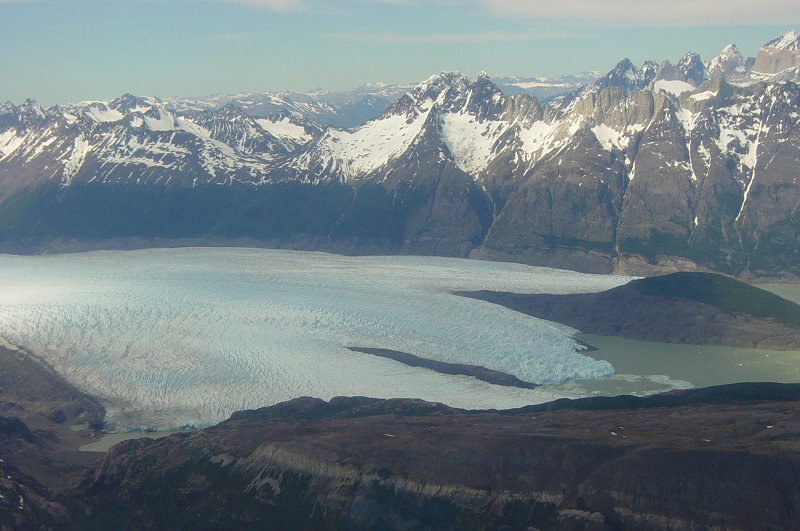Glaciers Melting Fast in South America

Since 2000, the ice fields stretching over South America's Patagonia region have melted enough to cover the entire United States with more than an inch of water, researchers say.
The Southern Patagonian Ice Field and its smaller neighbor, the Northern Patagonian Ice Field, stretch over the southernmost part of the Andes Mountains and feed into surrounding oceans as they melt. A new study shows that these networks of glaciers have been losing water much faster in the past 12 years than they had been in previous decades.
Between the 1970s and 2000, meltwater from both ice fields raised global sea levels by an average of .042 millimeters each year, previous research showed. Using satellite imagery, a team of researchers at Cornell University found that this figure has increased to 0.067 mm per year since 2000.
The researchers found that the southern ice field alone loses around 20 billion tons of ice annually, or roughly 9,000 times the volume of water stored by Hoover Dam each year, according to a statement from the American Geophysical Union. And on average, the glaciers of this field have thinned by about 5.9 feet (1.8 meters) per year, though the researchers note that melting is not consistent over the entire area.
"We find some glaciers are stagnant and even that some have advanced slightly but on the whole, retreat and thinning is prevalent," lead Cornell researcher, Michael Willis, said in a statement. "Interestingly, we see thinning occurring up to the highest elevations, where presumably it is coldest."
Warming air temperatures may directly contribute to the thinning, but they also increase chances of rain. More precipitation could mean more water beneath the glaciers, causing them to move faster and push more ice into the oceans, the researchers said. And rising water levels in lakes surrounding glaciers also could be eating away at their edges.
The study was published Sept. 5 in the journal Geophysical Research Letters.
Get the world’s most fascinating discoveries delivered straight to your inbox.
Follow LiveScience on Twitter @livescience. We're also on Facebook & Google+.



